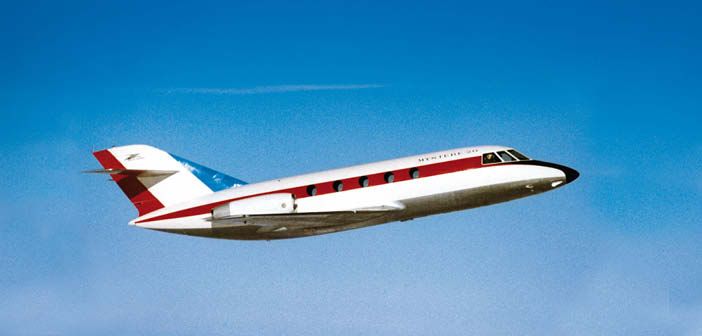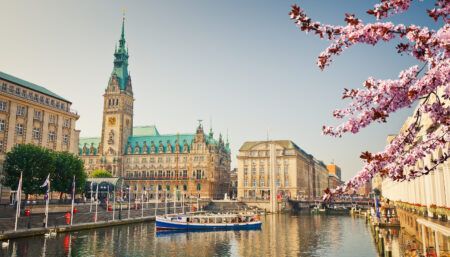Dassault Aviation is celebrating the 60-year anniversary of Falcon business jets.
“For an aircraft to fly well, it must be beautiful,” Marcel Dassault famously said. Already well known for the sleek Mirage fighters, Dassault – the man and the company – proved the adage once again on 4 May 1963, with the first flight of the Mystère 20, the company’s first business jet. With an eye toward the sizable American market, the Mystère 20 would soon be rebranded the Falcon 20.
Sixty years and more than 2,700 business jets later, Dassault Aviation continues with its focus on building beautiful, advanced-technology aircraft. “The formula has not changed,” said Dassault Aviation’s chairman and CEO Eric Trappier. “Every Dassault aircraft must have superb handling, beautiful lines, and rugged construction. And, of course, it has to provide state-of-the-art comfort.”
The Falcon 20 wowed some of the top aviation leaders of the time, including Charles Lindbergh, Pan Am chief executive Juan Trippe, and FedEx founder Fred Smith. It went on to spawn 27 different model types that found buyers among entrepreneurs, government agencies and several nations’ armed forces. Dassault said the Falcon 20’s safety features, including the use of rugged fighter structures and systems, set the standard for countless future safety improvements, from head-up cockpit displays to digital flight controls.
Today, Dassault’s corporate values, design ethos, and focus on elegant lines are embodied in two brand new models, the Falcon 6X and the Falcon 10X. Both have been recognised by the design community with prestigious interior design awards. The 6X, which is due to enter service this year, is equipped with Dassault’s most advanced digital flight control system to date, and offers a range of 5,500 nautical miles. The 10X, which is in the early stages of assembly, will come with even more advanced systems and safety features, and a range of 7,500 nautical miles.
The first Dassault business jet takes off
A little after 5pm on 4 May 1963, test pilots René Bigand and Jean Dilliare “gave it the gas”, as one historical account recalls, taking the Falcon 20 for an inaugural one-hour flight. The flight occurred late in the day because of the visit of Charles Lindbergh, who dropped by to inspect the new business jet on behalf of Pan Am. It was only after he had departed Dassault’s Mérignac final assembly plant, near Bordeaux, that the flight team readied the aircraft for flight.
Lindbergh reportedly wired Pan Am CEO Juan Trippe, “I’ve found our bird”. The airline promptly ordered 40 units with an option for 120 more and established Pan Am Business Jets to run its executive jet operations. The new entity later evolved into Dassault Falcon Jet (DFJ), a fully owned Dassault Aviation affiliate. Headquartered in Teterboro, New Jersey, DFJ is responsible for representing and supporting Falcons in the USA and elsewhere in the Western Hemisphere.
More orders
In 1973, Fred Smith launched FedEx with a fleet of 33 Falcon 20s modified with a large cargo door. In the 1980s, the US Coast Guard ordered 41 Falcon 20s (designated the HU-25) modified for search and rescue. In all, Dassault went on to build nearly 500 20-series aircraft.
Continuous advances
In the years following, the company introduced a series of aircraft models. Currently, more than 2,100 Falcons are operating in over 90 countries around the world. The best-selling model has been the Falcon 2000, which has been continuously updated. Nearly 700 have been delivered so far.
The second-best seller has been the workhorse Falcon 900, which has also gone through numerous iterations. To date more than 550 of these aircraft have been delivered, including two that were recently handed over to the Royal Air Force for VIP transportation service.
Also popular has been the fly-by-wire Falcon 7X/8X line. Some 400 of these have come off the assembly line.
“Through these different models, we have built up a strong legacy and a solid base of technological know-how that makes us confident in our ability to continue developing new products that fully meet customer expectations,” said Trappier. “Sixty years on, Falcons are still completely distinctive in the business jet world: beautiful, delightful to fly, and always on the leading edge of technology, bringing safety, comfort and productivity benefits to operators around the globe.”





